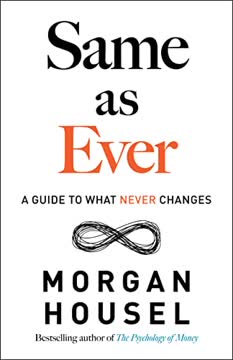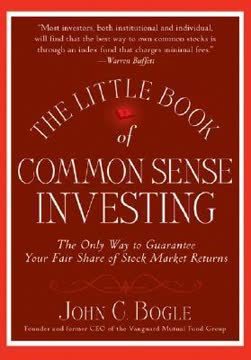重点摘要
1. 成功源于释放内在的赢家
每个人心中都有天才,都有一个等待被唤醒的赢家。
激发你的潜能。 每个人都拥有尚未开发的能力和天赋,等待被发现和培养。正如米开朗基罗的大卫雕像藏于一块大理石中,你的内在天才也需通过自我反思、设定目标和有意识的行动来雕琢。
突破心理障碍。 我们常被自身的限制性信念和自我怀疑所束缚,难以成就非凡。通过挑战这些内心障碍,培养成长型思维,我们能够超越自我设限。记住罗杰·班尼斯特打破“不可逾越”的四分钟英里纪录,为后来者开辟道路。
培养赢家心态。 专注于自身优势,想象成功的画面,坚定不移地相信自己的能力。正如板球运动员罗宾·乌塔帕那句“我从未想过会失误”的信念,以自信和乐观迎接挑战。你的思维塑造现实,选择以赢家的心态思考。
2. 坚持与自信驱动成就
“我来打!”他说。就在那一刻,西杜说,一颗明星诞生了。
拥抱“我来打”的精神。 这句印地语表达了面对逆境坚持不懈的决心。就像年轻的萨钦·坦杜尔卡尔,尽管鼻子流血仍选择继续比赛,决心克服困难而非放弃。
从挫折中学习。 失败不是终点,而是成长和进步的机会。以马尔万·阿塔帕图为例,他在前三场测试赛中三次零分,但凭借坚持和努力最终成为成功的板球运动员。你对失败的反应决定最终成败。
保持对旅程的信念。 成功往往伴随漫长且看似无果的努力。中国竹子的故事——地下生长五年后迅速拔节——说明了耐心和持续努力对实现长期目标的重要性。
3. 专注优势,非局限
不要纠结于别人认为你做不到的事。
发挥独特天赋。 不要执着于所谓的弱点,而应识别并发展你的优势。正如NBA历史上最矮的球员泰隆·博古斯,凭借速度和敏捷取得成功,找到将表面劣势转化为优势的方法。
挑战传统观念。 不要让他人的看法限制你的潜力。卡尔桑拜·帕特尔专注于低成本生产,尽管缺乏传统营销技巧,却打造了尼尔玛帝国,彰显了发挥优势的力量。
重新定义缺陷。 如同破裂的水壶在旅途中滋养了花朵,你的不完美也许蕴藏着独特价值。拥抱个性,寻找创造性贡献的方式,即使不走传统路径。
4. 给予与感恩促进成功
成为一个“两美元的人”。
践行慷慨。 “两美元的人”理念鼓励给予超出预期和要求的东西。这种心态不仅惠及他人,也提升自身的丰盛感和自我价值。小小的慷慨行为能对给予者和接受者产生深远影响。
认可无名英雄。 感谢那些支持你成功的人,如查理·普拉姆故事中的降落伞打包员。表达感激和赞赏营造积极氛围,增强人际关系。
树立“给予者”心态。 关注为他人创造价值,而非单纯追求个人利益。正如甘地将第二只鞋子扔出,陪伴掉落的那只鞋,思考如何在困境中惠及他人。
5. 努力与持续进步不可或缺
毕竟,承诺就是承诺。
追求卓越。 如拉坦·塔塔在面对质疑时坚持打造十万卢比汽车(Nano),设定宏伟目标并不懈努力。对自己和他人的承诺建立信誉,推动成功。
拥抱挑战。 蝴蝶挣脱茧壳以强化翅膀,成长往往伴随困难。抵制走捷径或逃避不适的诱惑,这些经历塑造韧性和能力。
不断突破极限。 采纳“一度多一点”的理念,始终努力超越预期和舒适区。持续改进带来长期显著成长和成就。
6. 有效领导需赋能他人
“上面的人线在下面的人手中!”
赋能团队。 这句印地语强调认同并重视团队每个成员的贡献。伟大领导者明白,成功依赖于整个团队的努力。
以身作则。 如拉坦·塔塔帮忙换轮胎,展现谦逊和与团队并肩作战的态度。这种“换轮胎式领导”赢得尊重和忠诚,促进协作与互助文化。
了解你的团队。 米歇尔·奥巴马对员工的建议——“你是否知道他们的名字将决定你的评价”——凸显了与每位成员建立联系和重视他们的重要性。
7. 平衡与自知带来满足
足够了。
定义你的“足够”。 在这个常鼓励无止境追求的世界里,有意识地界定生活中各方面的“足够”,帮助保持平衡,避免无休止的追逐掩盖真正的满足感。
优先关注真正重要的事。 参考幸福的ACE三要素:自主性、连接感和执行能力。专注于培养这些内在元素,而非单纯追求外在成功指标。
练习正念与反思。 花时间“品味咖啡”,欣赏自己的旅程。定期反思,如IIMA校友聚会,有助于保持视角,重新连接核心价值观和人际关系。
最后更新日期:
FAQ
1. What is "The Habit of Winning" by Prakash Iyer about?
- Collection of Inspiring Stories: The book is a compilation of short, real-life stories and anecdotes designed to inspire, motivate, and help readers unleash their inner winner.
- Focus on Leadership and Success: It explores themes such as vision, self-belief, perseverance, teamwork, giving, hard work, and finding balance, all through the lens of leadership and personal growth.
- Toolkit for Self-Improvement: Prakash Iyer positions the book as a "sculptor’s toolkit" to help readers chip away at self-doubt and mediocrity, revealing the leader and winner within.
- Practical Lessons: Each story is followed by actionable insights or reflective questions, making the lessons easy to apply in daily life and work.
2. Why should I read "The Habit of Winning" by Prakash Iyer?
- Relatable and Memorable: The book uses storytelling to make management and life lessons memorable and relatable, drawing from sports, business, and everyday life.
- Actionable Wisdom: It offers practical advice and simple frameworks that can be immediately implemented to improve performance, mindset, and relationships.
- Universal Appeal: Whether you’re a student, professional, manager, or entrepreneur, the book’s lessons are relevant to anyone seeking personal or professional growth.
- Motivational Boost: The stories are designed to reignite passion, instill hope, and encourage readers to overcome obstacles and pursue their goals with renewed vigor.
3. What are the key takeaways from "The Habit of Winning"?
- Vision and Goals Matter: Having a clear vision and setting specific goals is the foundation of success; everyone needs their own "mountain to climb."
- Self-Belief is Crucial: Believing in oneself, focusing on strengths, and breaking mental barriers are essential for achieving extraordinary results.
- Perseverance Pays Off: Persistence, patience, and the willingness to keep going despite setbacks are highlighted as non-negotiable habits of winners.
- Teamwork and Giving: Success is often a collective effort, and giving, supporting others, and valuing every team member are recurring themes.
- Action and Balance: Taking initiative, managing time, and finding balance between ambition and contentment are vital for sustained happiness and achievement.
4. How does Prakash Iyer define a "winner’s mindset" in "The Habit of Winning"?
- Positive Expectations: Winners expect good things to happen and focus on possibilities rather than limitations.
- Resilience and Adaptability: They bounce back from setbacks, adapt their tactics, but remain steadfast in their goals.
- Focus and Persistence: Winners choose a clear target (the "rabbit") and stick to it, changing strategies if needed but not the goal itself.
- Self-Reflection: They regularly assess their beliefs, challenge self-imposed barriers, and are open to changing mindsets for better outcomes.
5. What are some of the most powerful stories or examples in "The Habit of Winning"?
- Károly Takács’ Comeback: The story of the Hungarian shooter who lost his shooting hand but trained his left hand to win Olympic gold, illustrating resilience.
- Roger Bannister’s Four-Minute Mile: Breaking the mental barrier of the four-minute mile, showing the power of mindset over physical limits.
- Sachin Tendulkar’s "Main Khelega": The cricket legend’s determination to play despite injury, symbolizing grit and team spirit.
- The Chinese Bamboo: A metaphor for patience and unseen growth, emphasizing the importance of laying strong foundations before visible success.
- The Dahi Handi Pyramid: A lesson in teamwork, diversity, and the importance of every role in achieving collective goals.
6. What practical advice does "The Habit of Winning" offer for setting and achieving goals?
- Write Down Your Goals: The book stresses the importance of writing goals on paper to clarify intent and increase commitment.
- Commit to Action: It encourages making a concrete commitment to take steps toward goals, not just planning or wishing.
- Take the First Step Today: Immediate action, however small, is emphasized as the catalyst for momentum and progress.
- Stay Focused: Avoid chasing too many opportunities at once; pick your "rabbit" and persist until you succeed.
7. How does "The Habit of Winning" address overcoming self-doubt and mental barriers?
- Break Mental Barriers: Stories like Roger Bannister’s illustrate that many limitations are self-imposed and can be shattered with belief.
- Focus on Strengths: The book encourages readers to build on their unique abilities rather than fixate on weaknesses.
- Reframe Failures: Failures are presented as learning opportunities and stepping stones, not endpoints.
- Replace Negative Thoughts: Setting positive, actionable goals helps to crowd out self-doubt and negative thinking.
8. What does "The Habit of Winning" say about the importance of teamwork and leadership?
- Value Every Role: Analogies like the "stone breakers" and the janitor at NASA highlight the significance of every team member’s contribution.
- Lead from the Front: Stories about leaders like Ratan Tata demonstrate the power of hands-on, humble leadership.
- Empower the Frontline: Successful organizations invert the hierarchy, supporting those closest to the action.
- Build Trust and Respect: Teamwork thrives when leaders foster respect, share vision, and recognize individual efforts.
9. How does "The Habit of Winning" suggest handling criticism, setbacks, and failure?
- See Criticism as Fuel: Constructive criticism is reframed as a sign that someone cares and believes in your potential.
- Persevere Like Atapattu: The story of the cricketer who failed repeatedly before succeeding underscores the value of not giving up.
- Adopt the "One-Degree-More" Habit: Small extra efforts can make a disproportionate difference in outcomes.
- Learn from Setbacks: Each failure is an opportunity to reassess, adapt, and come back stronger.
10. What are the main concepts around giving, gratitude, and making a difference in "The Habit of Winning"?
- Be a "Two-Dollar Man": Giving more than expected, whether in tips or praise, enriches both the giver and the recipient.
- Small Acts Matter: The "starfish story" teaches that even small contributions can have a significant impact.
- Go-Giver, Not Go-Getter: The book advocates for a mindset of sharing, helping, and focusing on others’ needs.
- Recognize Unsung Heroes: Acknowledging and appreciating the "parachute packers" in our lives is essential for true success.
11. How does "The Habit of Winning" address work-life balance and finding contentment?
- Define "Enough": True happiness comes from knowing what is "enough" for you, not from endless pursuit of more.
- Balance Ambition and Sacrifice: Achieving big goals often requires short-term sacrifices, but balance can be found over time.
- Enjoy the Coffee, Not the Cup: Focus on the substance of life (relationships, experiences) rather than external trappings (status, possessions).
- Be Present: The book encourages living in the moment and taking action now, rather than waiting for the perfect time.
12. What are the best quotes from "The Habit of Winning" by Prakash Iyer and what do they mean?
- "Winning is a habit. Unfortunately, so is losing." – Emphasizes that success and failure are both products of repeated behaviors and choices.
- "If you think you can, you can. If you think you can’t, you are right!" – Highlights the power of self-belief and mindset in determining outcomes.
- "Change tactics. Don’t change the rabbit." – Advises persistence in pursuing goals, even if the approach needs adjustment.
- "Get into the ‘one-degree-more’ habit." – Encourages making that small extra effort which can lead to extraordinary results.
- "It’s not the world, it’s the window." – Reminds us that our perceptions shape our reality, and changing our perspective can change our experience.
评论
《赢的习惯》是一部激励类书籍,汇集了体育、商业与生活中的短篇故事与轶事。读者普遍认可其简洁明了的文风,以及在领导力、团队合作和个人成长方面的实用启示。许多人认为它富有激励性,值得反复阅读,称赞其真实案例和改变视角的能力。然而,也有部分读者批评其内容重复,缺乏创新,且存在性别偏见的倾向。总体来看,这本书被视为寻求动力与自我提升者的良好入门读物,但对于其深度与独特性的评价则见仁见智。
Similar Books














